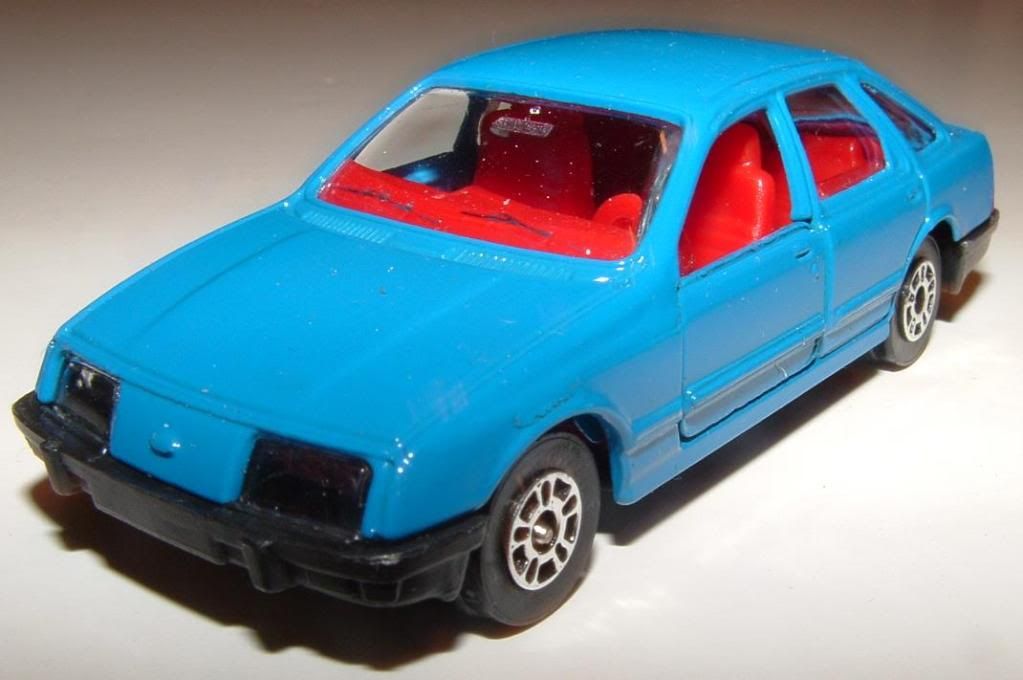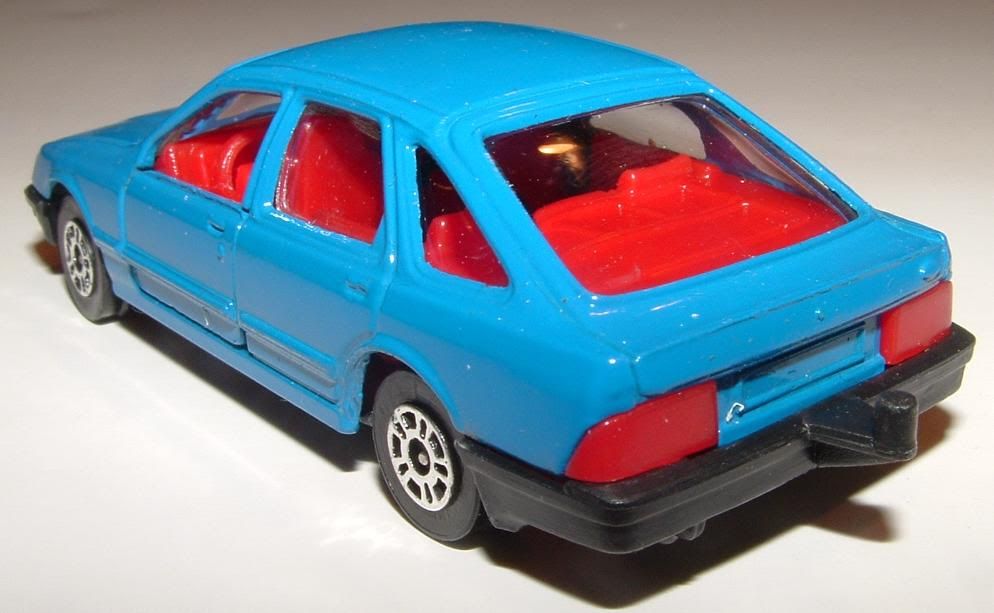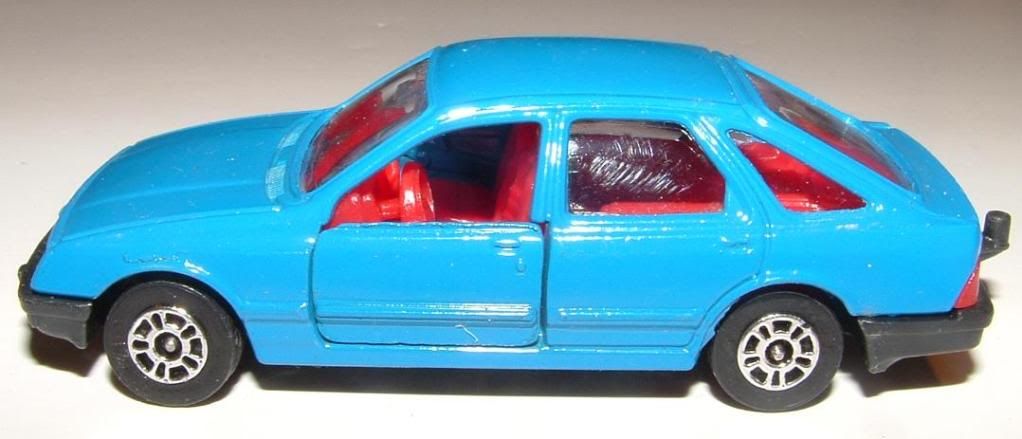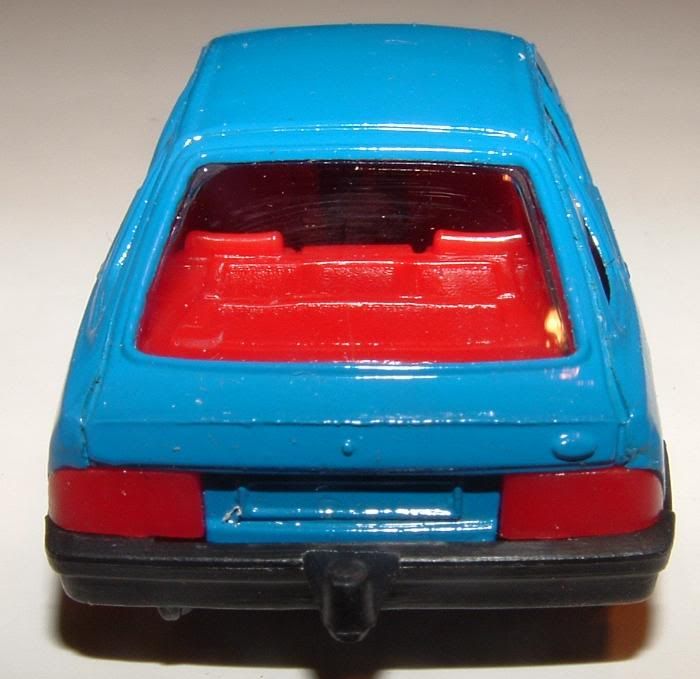
A blog focusing on 1/64 diecast from such popular brands as Hot Wheels, Matchbox, Johnny Lightning, M2 Machines, GreenLight, Tomica, Yat Ming, Majorette, MotorMax, Siku, Corgi, Guisval, Playart, Ertl, Zylmex, Racing Champions, & many more. Swifty's Garage features a daily Car Of The Day and news updates from your favorite brands!
Saturday, December 11, 2010
Car Of The Day: December 11, 2010
Today's car of the day is Corgi's 1983 Ford Sierra.
The Ford Sierra is a large family car built by Ford Europe from 1982 until 1993. It was designed by Uwe Bahnsen, Robert Lutz and Patrick le Quément. The code used during development was "Project Toni".
Released on 21 September 1982, it replaced the Ford Cortina and Ford Taunus. Its aerodynamic styling was ahead of its time but many conservative buyers did not take fondly to the styling.
Possibly for this reason (and the fact that the smaller Escort was enjoying an increase in sales during the early 1980s), and the early lack of a saloon variant, it was mainly manufactured in Germany, Belgium, and the United Kingdom, although Sierras were also assembled in Argentina, Venezuela, South Africa, and New Zealand.
The Sierra was 1983 Semperit Irish Car of the Year in Ireland.
For more information and pictures of the real car please visit: Ford Sierra
A fairly realistic release from Corgi, my only real fault on this one is the over-sized trailer hitch. Considering we've seen much worse (MotorMax anyone?) that's a very moot point. This one's in a nice sedate color and the doors open. This casting later showed up in the Hot Wheels range in the mid 1990s.
The first Ford vehicle to have the bold new "aero" look styling was the 1981 Ford Probe III concept car. The good reception this received encouraged Ford management to go ahead with a production car with styling almost as challenging. This "aero" look influenced Fords worldwide; the 1983 Ford Thunderbird in North America introduced similar rounded, flowing lines, and some other new Fords of the time adopted the look. The aerodynamic features of the Sierra were developed from those first seen in the Escort Mark III — the "Aeroback" bootlid stump was proved to reduce the drag coefficient of the bodyshell significantly, which was a class leading 0.34 at its launch, though not as good as the 0.22 of the visually similar Ford Probe III concept car of the previous year.
The aerodynamic styling of the Sierra would later be seen in North America's equally revolutionary Ford Taurus.
At first, many found the design blob-like and difficult to accept after being used to the sharp-edged, straight-line styling of the Cortina, and it picked up nicknames such as "Jellymould" and "The Salesman's Spaceship" (the latter thanks to its status as a popular fleet car in the United Kingdom). Sales were slow at first. It was later in the Sierra's life that the styling began to pay off; ten years after its introduction, the Sierra's styling was not nearly as outdated as its contemporaries, even though all major competitors were newer designs, although the Sierra had been tweaked on several occasions. The most notable changes came at the start of 1987, with a major facelift the addition of a Sapphire saloon. As other manufacturers adopted similar aerodynamic styling, the Sierra looked more normal.
The revolutionary design and new name of the Cortina replacement attracted notable criticism on television from comedian Alexi Sayle, who blasted the Sierra for "not speaking English volumes" the way the Cortina had.
Early versions suffered from crosswind stability problems, which were addressed in 1985 with the addition of "strakes" (small spoilers), on the rear edge of the rubber seals of the rear most side windows. These shortcomings saw a lot of press attention, and contributed to early slow sales. Other rumours that the car hid major crash damage (in part true, as the new bumper design sprung back after minor impact and couldn't be "read" to interpret major damage) also harmed the car's reputation. This reached near-hysterical heights at one point with UK press making a report that Ford would reintroduce the previous Cortina model out of desperation. However, these reports were swiftly denied by Ford's overheads.
At its launch some of the Sierra's external styling differed depending on the specification. In place of the model's regular 2-bar grille, which was unpainted on the lowest specification model, the Ghia featured a narrower blanked-off grille between wider, but still inset, headlights while the front bumper was also restyled and featured combined indicator/foglight units compared to the lower specification model's slimmer but wider indicator units. The XR4i had an identical front end to the Ghia, bar the bumper which was slightly different. The rear lights of the Ghia were the same shape and layout as other models, but featured tiny horiziontals strakes on the lenses to give the impression that they were smoked. A couple of years later all the lower spec models adopting the Ghia and XR4i's front grille and headlight treatment.
Subscribe to:
Post Comments (Atom)






No comments:
Post a Comment